Issue 9, August 24, 2020
Gymnosporangium Rusts on Apples, Crabapples, and Hawthorns
Diane Plewa wrote about Pear Trellis Rust in Issue 8 of this newsletter. A few closely related rust diseases have also wreaked havoc on apples, crabapples, and hawthorns this growing season. I recently observed numerous hawthorns that were entirely defoliated by severe rust infections.
Three cedar rust diseases commonly occur in Illinois:
- Cedar-apple rust (Gymnosporangium juniperi-virginianae)
- Cedar-hawthorn rust (Gymnosporangium globosum)
- Cedar-quince rust (Gymnosporangium clavipes)
Cedar-apple rust is the most common of the above three. Infections can occur on leaves, fruits and twigs of apples and crabapples. For ornamental trees, leaf symptoms are more of a problem than affected stems and fruits. Leaf symptoms first appear in May and June as pale yellow spots on the upper leaf surface. The spots eventually enlarge and turn orange in color. They will also begin to appear on the underside of the leaf, eventually forming tube-like structures (aecia). Infections may result in yellowing leaves and defoliation.
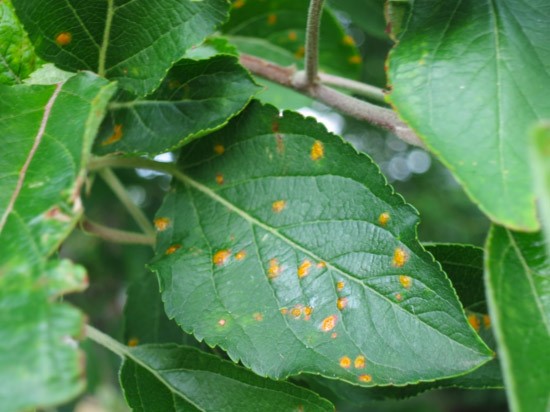
Cedar-apple rust on apple.
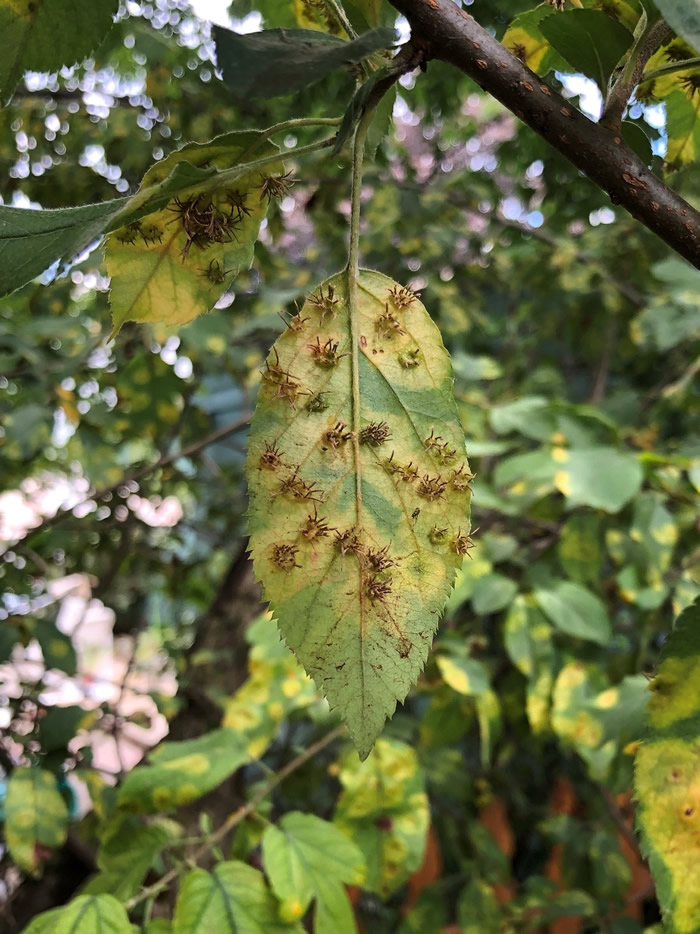
Tube-like structures (aecia) on the underside of a crabapple leaf
Cedar-hawthorn rust can infect several species within the rose family and can cause similar foliar symptoms to cedar-apple rust. The pathogen is considered minor on apple, crabapple, serviceberry and pears. However, the pathogen can cause severe disease on certain hawthorn species (Crataegus spp.). The downy hawthorn (C. mollis) is considered very susceptible to this disease, while infections seem to be less severe on hawthorn species with glossy leaf surfaces (C. crusgalli, C.viridis ‘Winter King'). This rust disease most often affects leaves, causing yellow spots that enlarge eventually and develop a gray-brown color. Severely infected hawthorn leaves often turn bright yellow before dropping prematurely. This pathogen can also damage fruits and twigs. However, this type of injury is more likely the result of cedar-quince rust.
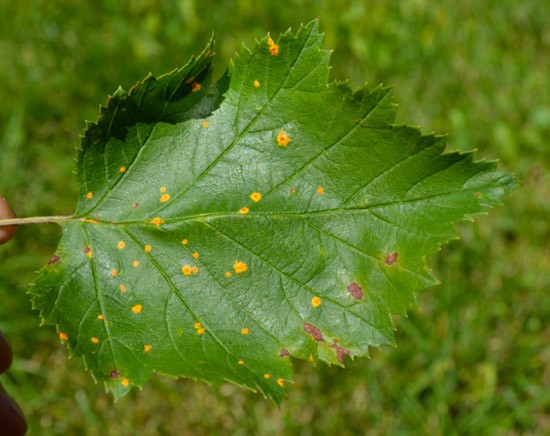
Cedar-hawthorn rust on Downy Hawthorn (Crataegus mollis).
Cedar-quince rust will also infect various members of the rose family. Serviceberry, chokeberry, quince, hawthorn, and apple are some of the more noteworthy hosts. Leaf symptoms for this disease are limited to infections of petioles and veins. This pathogen causes noticeable damage to stems, thorns and fruits of susceptible species. Stems and thorns may become enlarged and deformed. Fungal aecia cover infected fruit, giving them an orange, fringed appearance.
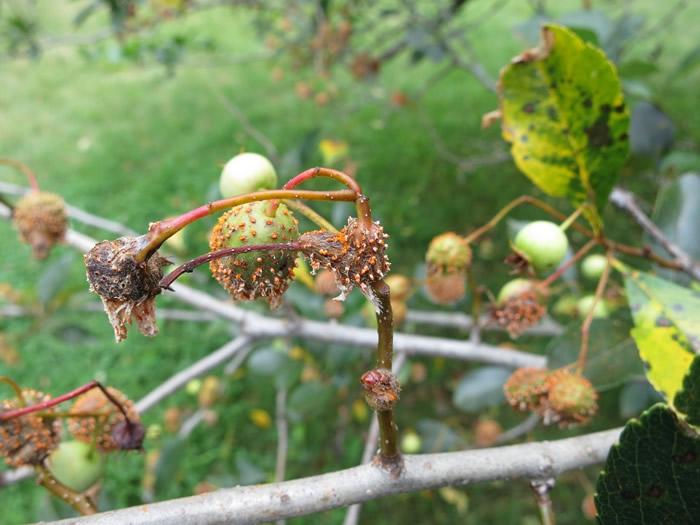
Cedar-quince rust on hawthorn. Stem and fruit infections.
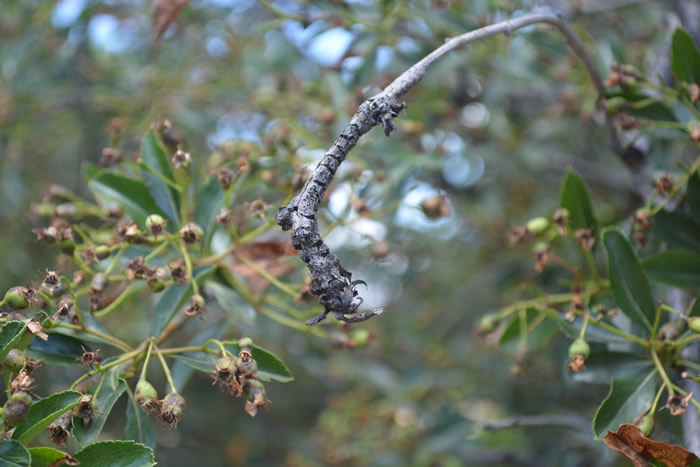
Cedar-quince rust on hawthorn. Old branch swelling from previous season’s infection.
Control
Most homeowners tolerate the injury caused by rust diseases. When controls are warranted, start with cultural practices. Remove any nearby, unwanted juniper hosts, or prune out galls from the infected branches. Be aware that spores may still blow in from neighboring properties. Select rust-resistant cultivars when planting new apples, crabapples, or hawthorns. If cedar rust diseases are a yearly problem, consider protecting high-value plants with fungicides. It is too late to protect this year’s growth. Mark your calendars with a reminder to apply fungicides early next spring to protect new growth. Most fungicides are considered to be low risk to bees and other pollinators. However, some fungicides are known to synergize with other pesticides and products within the spray tank, potentially increasing their toxicity to bees. If you must apply a fungicide during bloom, we recommend selecting a pesticide that has the least toxicity to bees but is still effective against the target pest.
The Pollinator Network at Cornell University published a useful guide to help applicators select lower-risk pesticides for pollinators in landscape, ornamental & turf management:
Author:
Travis Cleveland